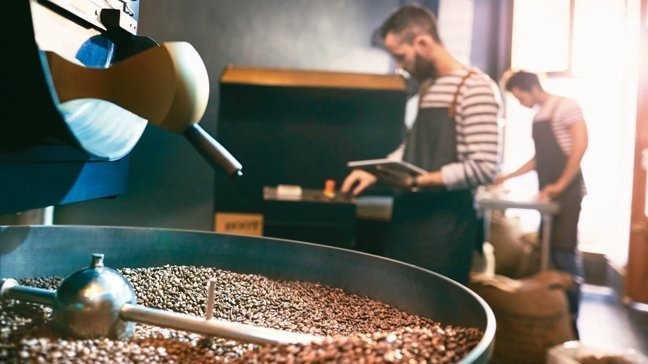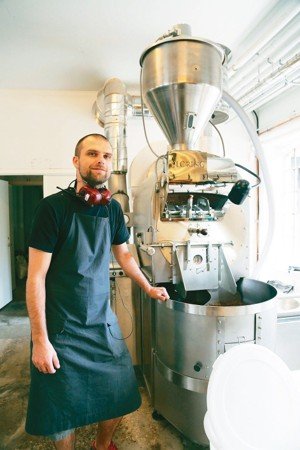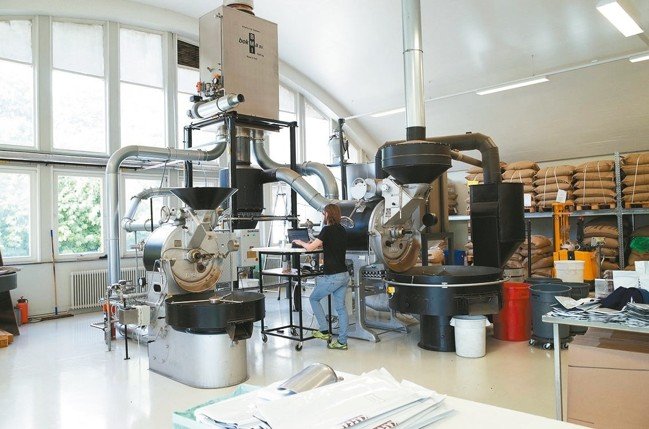Map of World Coffee Culture | differences in roasting Coffee in the three Coffee Culture circles in Europe
Professional coffee knowledge exchange more coffee bean information please follow the coffee workshop (Wechat official account cafe_style)
There are three major drinks for human beings, namely, wine, tea and coffee, which have different historical backgrounds. Human drinking has a history of more than 12000 years, and there are records of making and drinking alcohol in Mesopotamia (two river basins) dating back to the Neolithic Age. Human beings have a history of drinking tea for more than 4700 years. Coffee has the shortest history of drinking among the three major drinks of mankind, which is only less than 800 years. If we compare the seniority of the three major drinks to the age of a person, the history of drinking alcohol is 85 years old, the history of drinking tea is 35 years old, and the history of drinking coffee is only 5 years old.

Coffee is a part of food culture, with the local environment, the development of local coffee culture.
Human diet knowledge base is accumulated from experience from generation to generation. The drinking experience of "85 years old" makes human alcohol knowledge has reached a complete and mature stage. therefore, there are perfect wine books, knowledge bases and various educational institutions all over the world today. No matter what kind of wine you want to learn, you can find a perfect and mature knowledge base and learning channels. The "35-year-old" is in the prime of life for drinking tea, so that we can also enjoy a fully perfect tea knowledge base, and the knowledge and inheritance pipeline of tea has also reached a relatively mature stage. Coffee seniority is only "5 years old", which means that the accumulation of experience and knowledge base in this area is still in the extremely junior stage! Because the time of exposure to coffee is still short, compared with the rich knowledge base in the field of tea and wine, people obviously do not know enough about "coffee". Because we don't know enough, there are new coffee varieties, new coffee bean processing technology, new brewing technology and innovative brewing equipment almost every year. A large number of coffee is on the market, and the rules of international events on coffee are being adjusted and changed every year. The current situation of global coffee culture is "their own development, their own interpretation".

Norwegian Tim Wendelboe serves Nordic-style light roasted coffee, which is similar in color to black tea.
What on earth is coffee?
Coffee is a part of food culture. Food culture is based on the local environment, naturally developed and formed, different regions because of their different climate, will gradually develop a local food culture. As a result, coffee from different regions has gradually developed into a unique local coffee culture, following the local climate, eating habits and living culture. The root of the difference in coffee culture in different places lies in the "way of roasting coffee". From the point of view of coffee roasters, coffee culture in the world can be divided into three categories and six cultural circles:
1. The three major coffee cultural circles in Europe:
Italy, the five Nordic countries and other European regions
two。 The two major coffee cultural circles in Asia:
North Asia, South Asia
3. North American coffee culture circle:
The third wave and the boutique coffee association
▋ is one of the three major coffee cultural circles in Europe.
Italy | Baking only but not producing areas
Italy is the most exciting and colorful region in the development of coffee culture in the world, and the development of coffee culture in no other country can compare with it. Most of the most historical, largest and most well-known coffee roasters are in Italy. Why can Italian coffee develop so brilliantly? Perhaps it can be attributed to their unique gastronomic talent. Coffee is a kind of gourmet food. Italians are good at sensory intuition in making good food, do not adhere to red tape, attach importance to the inheritance of experience, and have a unique sense of taste. Create a world-famous Italian coffee culture.
Italy attaches importance to family inheritance. Coffee roasters with a history of more than 100 years have spread all over the country, easily passing on more than three generations. Each Italian coffee family has its own secret recipe for baking and blending, which is never spread out. This unique family knowledge and culture makes every Italian roaster brand product has a highly recognized flavor tonality. Buy coffee in Italy only recognize the roaster brand, do not recognize the producing areas of coffee beans, coffee bars all over the country (coffee è bar) are clearly marked with coffee roaster brands, Italian coffee gluttons are like long-time smokers, drinking only a specific brand of coffee for years, you can't get used to it with another brand. The closed family heritage makes Italian coffee distinctive and distinctive, but the technology is limited to Italy, and the unique flavor of Italian coffee cannot be enjoyed by roasting brands in other countries.
Traditional Italian coffee is "blended coffee", attaching importance to the roasting flavor of coffee (Roast flavor refers to the flavor given to coffee by roasting, such as cocoa, caramel, smoke, etc.) rather than producing area flavor (Origin flavor refers to the unique flavor of coffee producing area, such as aroma, flower flavor, etc.). Italian coffee is a "baking", "cooked" and "blending" process, and the process is complicated. Most Italians only drink espresso on weekdays, usually drinking it in one sip, adding sugar but not milk. Incidentally, Latte means "milk". If you want a glass of Latte in Italy, you will get a glass of milk.
The second of the three major coffee cultural circles in Europe by ▋
Five Nordic countries | shallow baked original flavor

Coffee Collective, a famous Danish cafe, has set up a special baking area.
The five Nordic countries, including Denmark, Norway, Sweden, Finland and Iceland, are in the vanguard of the world's exquisite coffee culture. The world's first barista Competition (WBC) originated in Nordic, which is also the region with the highest wages and prices in the world (meaning you can purchase the world's most expensive and best raw coffee beans) and the highest "per capita coffee consumption" in the world. Nordic people attach importance to "design", "sunshine" and "nature". Food emphasizes natural original flavor, and less heavy-tasting diet. Dietary preferences affect the taste of coffee, which makes the flavor of Nordic coffee very different from that of central and southern Europe. Nordic coffee prefers light roasting and pays attention to the presentation of natural bean flavor (Origin flafor) rather than baking flavor, which is completely opposite to Italian coffee, which prefers baking flavor to coffee producing area flavor.
Nordic people prefer original, clean, refreshing, bright and delicate aroma, and do not like earthy, smoky, scorched, and too strong wine flavor, so they can't drink Robusta coffee in the top Nordic cafes (which is quite common in Italian coffee). It is also difficult to drink heavy-flavored wet-planed coffee from Sumatra in Asia, let alone aged coffee such as Malabar in India. Because it's not the taste that Nordic likes. High-quality East African coffee such as Ethiopia Yegashefi, Kenya, Rwanda and high-quality Latin American coffee taste clean and refreshing, is a common style favored by Nordic coffee lovers.
The Nordic style shallow roasted coffee has a unique baking method, some people call it "fire light roasting". It is a fast fire baking technique completed with a brisk rhythm in a short time. Nordic style shallow roasted coffee tastes like fruit juice, three points like coffee, refreshing in the mouth, aroma, natural tropical fruit flavor and white flower aroma of high quality coffee beans, and sometimes with nectar smell, rich and meticulous aroma filled with nasal passages. The rhyme between the throat is usually shallow and short. Nordic-style light-roasted coffee is now available outside the Nordic countries.

A typical Nordic cafe, elegant, simple and brightly lit, the picture shows Kaffa in Oslo, Norway.
The third of the three major coffee cultural circles in Europe by ▋
Other parts of Europe | tend to re-bake
European coffee culture is the most distinct and representative of Italy and the five Nordic countries. Germany, Austria and France traditionally give priority to deep-roasted coffee, and deep-roasted coffee tastes bitter and is usually drunk with wine or milk. Austria has the famous Viennese fancy coffee, while France is represented by coffee milk "coffee O'Lei". French coffee is famous for its bad taste, but in recent years, a new generation of coffee roasting brands have emerged in France, and French coffee is getting better. British tradition is mainly tea-drinking culture (British afternoon tea culture). Coffee culture is driven by the third wave of North America after 2000, and gradually develops the current British coffee, which is similar to the current situation of coffee in Australia, mainly inheriting the North American coffee culture. Under the influence of Italian espresso culture, Portugal, Spain and other southern European countries generally have the habit of drinking espresso, but the coffee roasting and blending techniques of southern European countries generally lag behind Italy, so southern European coffee often has the appearance of Italian coffee, but tastes very different.

The coffee roaster in Kaffa, Norway, is also Nordic, bright and clean, with green outside the window.
Important Notice :
前街咖啡 FrontStreet Coffee has moved to new addredd:
FrontStreet Coffee Address: 315,Donghua East Road,GuangZhou
Tel:020 38364473
- Prev

Central American coffee beans have unique environmental advantages. This paper introduces the differences and characteristics of coffee in several regions.
Professional coffee knowledge exchange more coffee bean information please follow the coffee workshop (Wechat official account cafe_style) Central American high-quality coffee beans black gold-"coffee" unique environmental advantages give birth to good coffee in Central America, one of the four major coffee producing areas in the world, with the natural advantages of sunshine, land and mountains, coupled with an adequate working population, make the area a growing area.
- Next

An introduction to Taiwan's coffee culture? The development of coffee in Taiwan?
Professional coffee knowledge exchange more coffee bean information Please follow the coffee workshop (Wechat official account cafe_style) one of the topics on cross-strait coffee culture. Taiwan's early coffee culture was deeply influenced by Japan. At that time, cafes played an important role in the literary, painting and art circles. Nowadays, cheap fresh freshly ground coffee has become a part of Taiwan's common culture, especially fine coffee and hand-brewed coffee.
Related
- How did the Salvadoran coffee industry develop in Central America?
- What exactly does the golden cup extraction of coffee mean?
- The Origin of Coffee flower
- [2023 Starbucks World Earth Day] there are more meaningful things besides free Starbucks coffee!
- What kind of coffee is there in Spain? 9 Flavors of Spanish Coffee
- Aromatic African coffee| Kenya's coffee culture and historical production area
- Liberica Coffee Bean knowledge: the characteristics of Liberian Coffee beans of the three original species of Coffee beans
- The origin and formula of Spanish latte introduces the taste characteristics of Bombon coffee in Valencia, Spain.
- How to adjust the solution of over-extracted coffee
- What is the tasting period of coffee beans? What is the period of coffee and beans? How should coffee wake up and raise beans?

